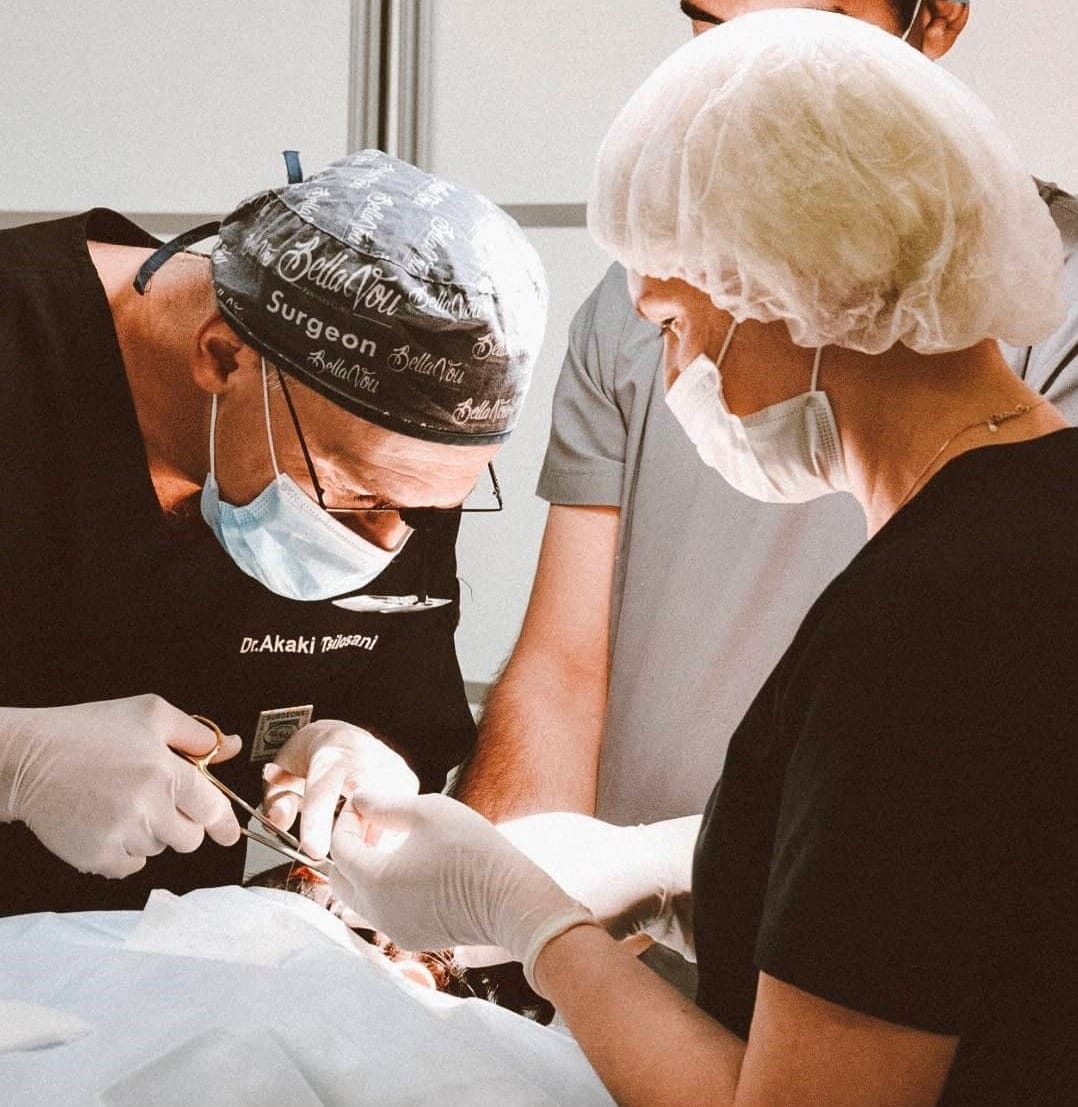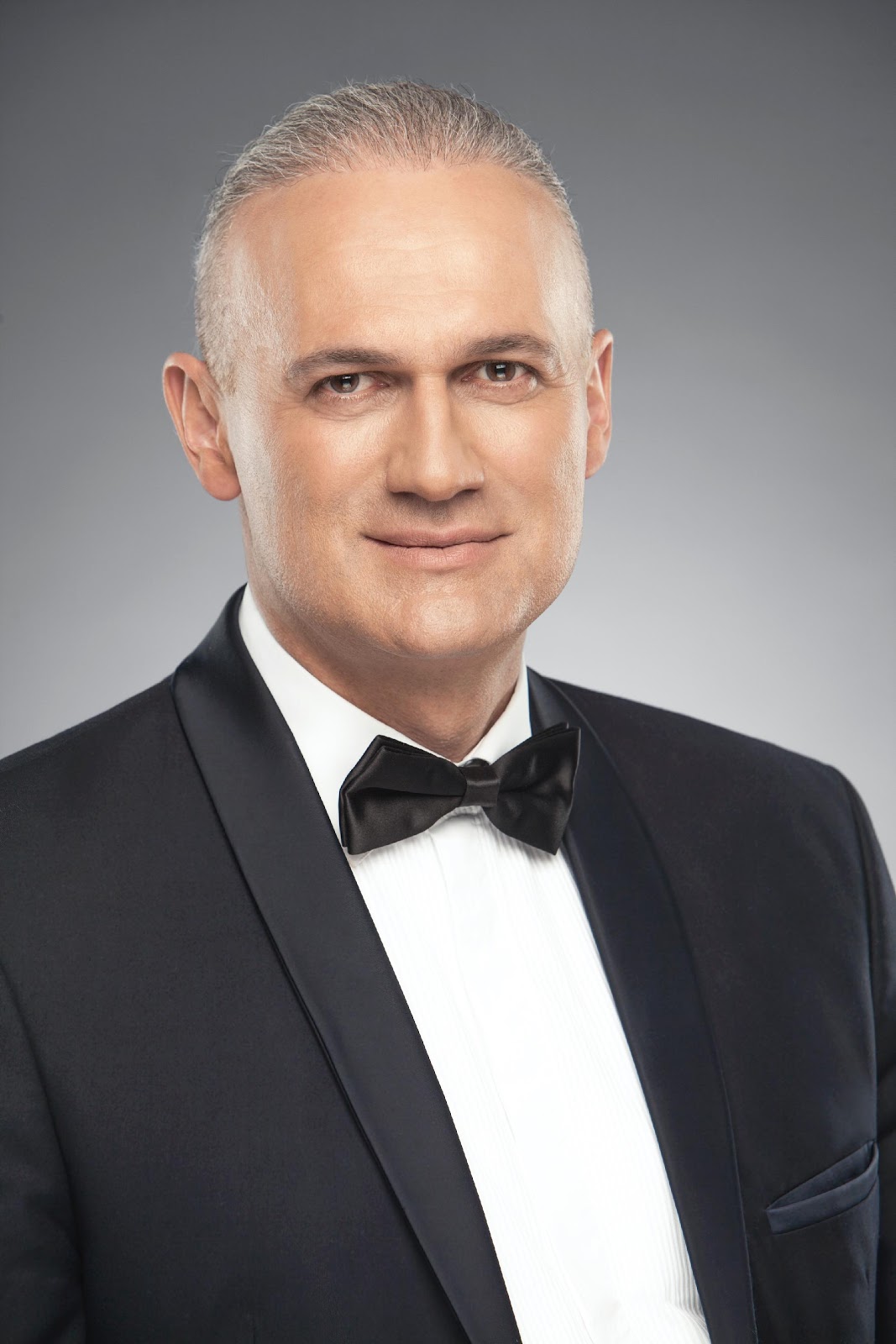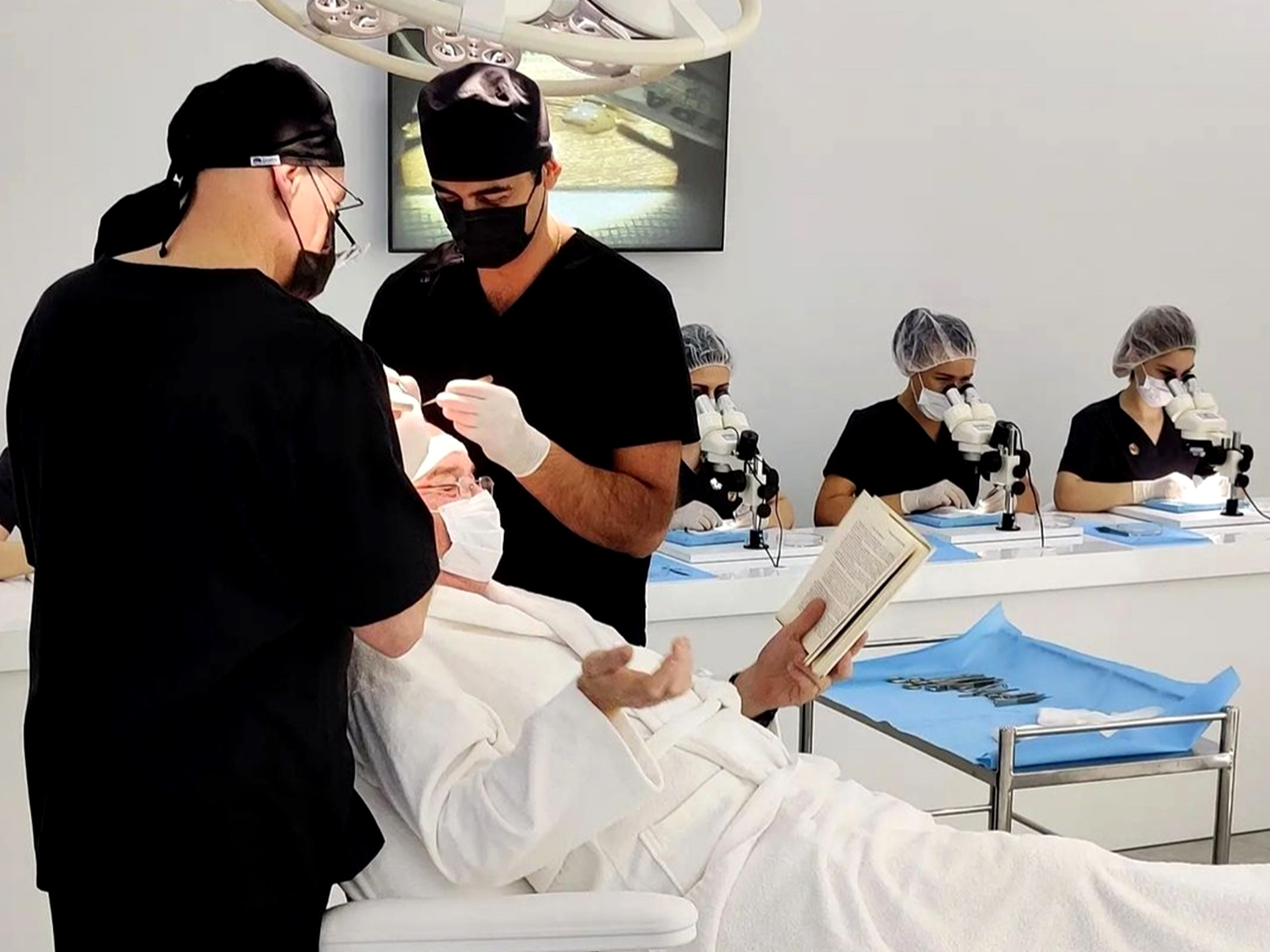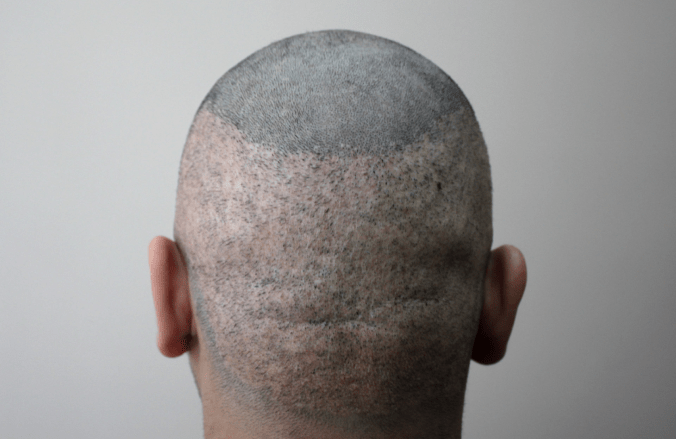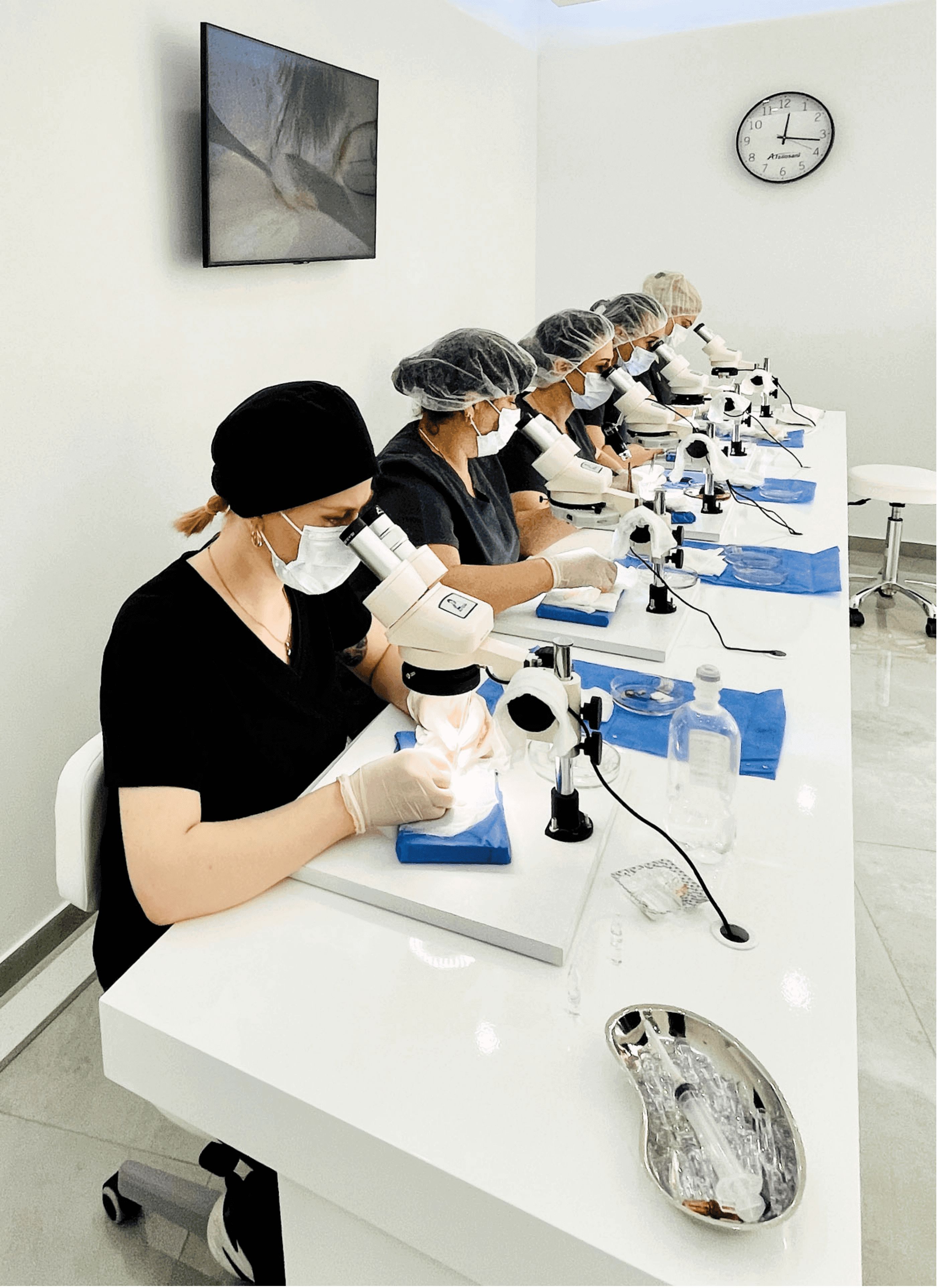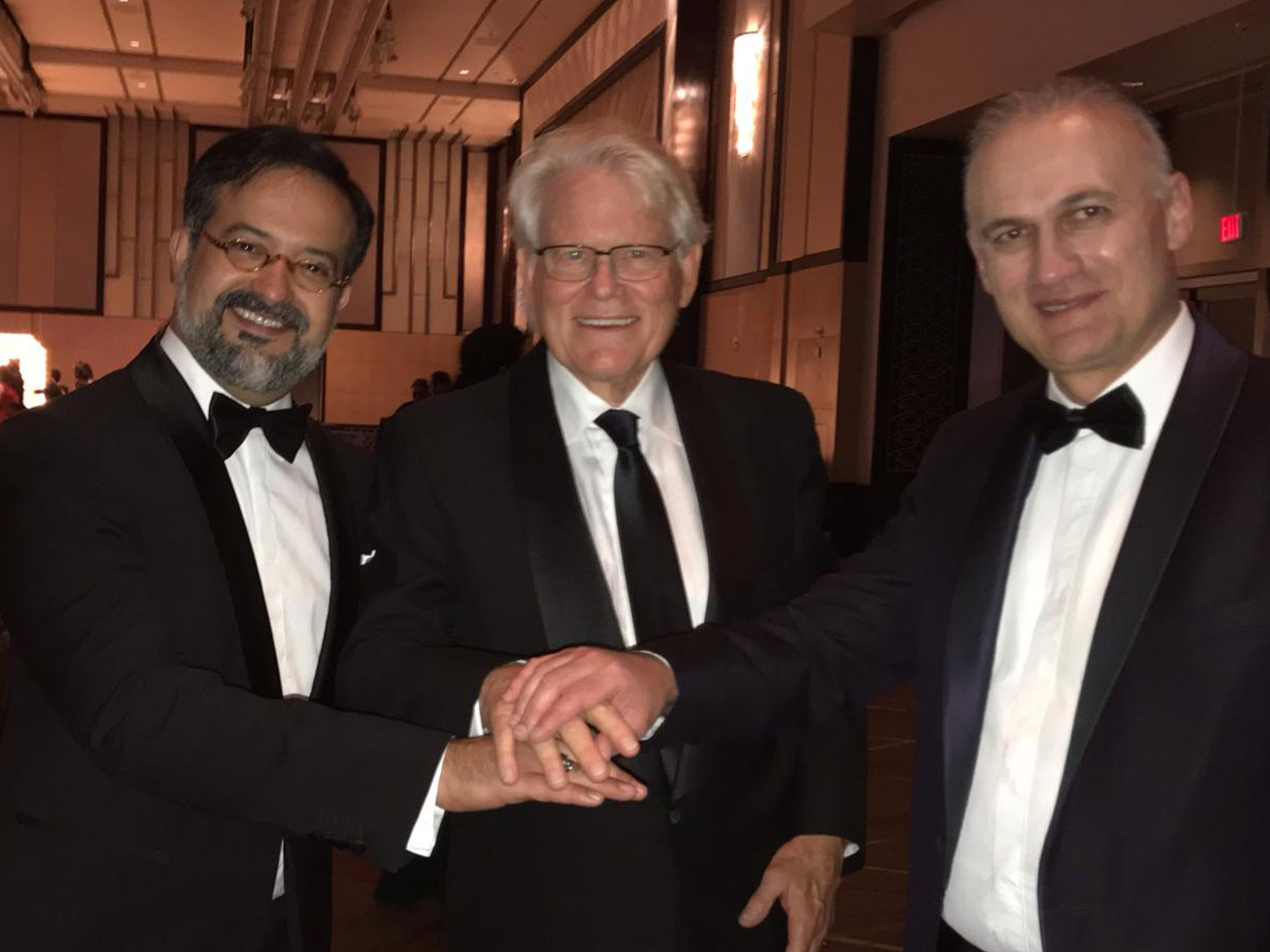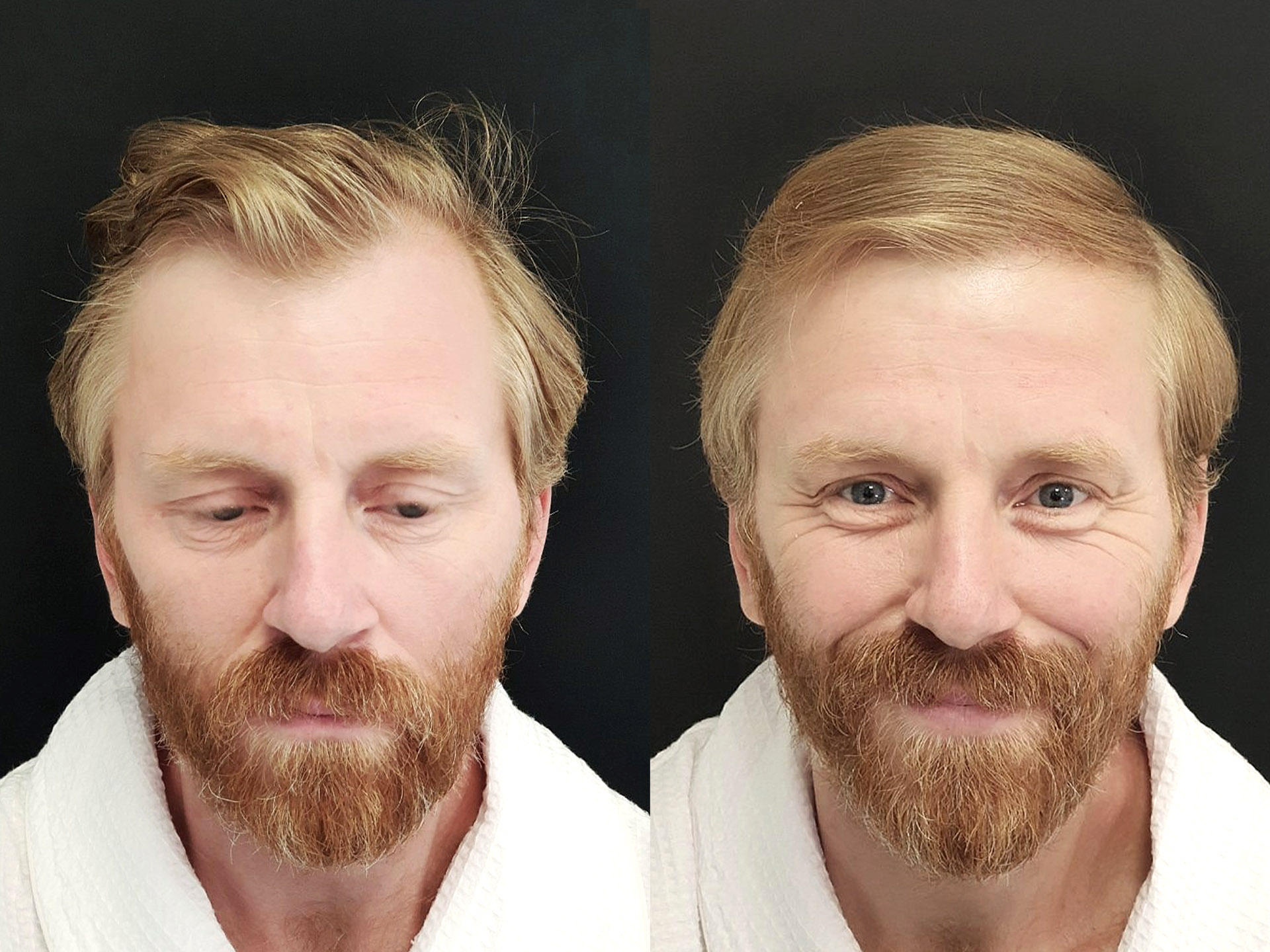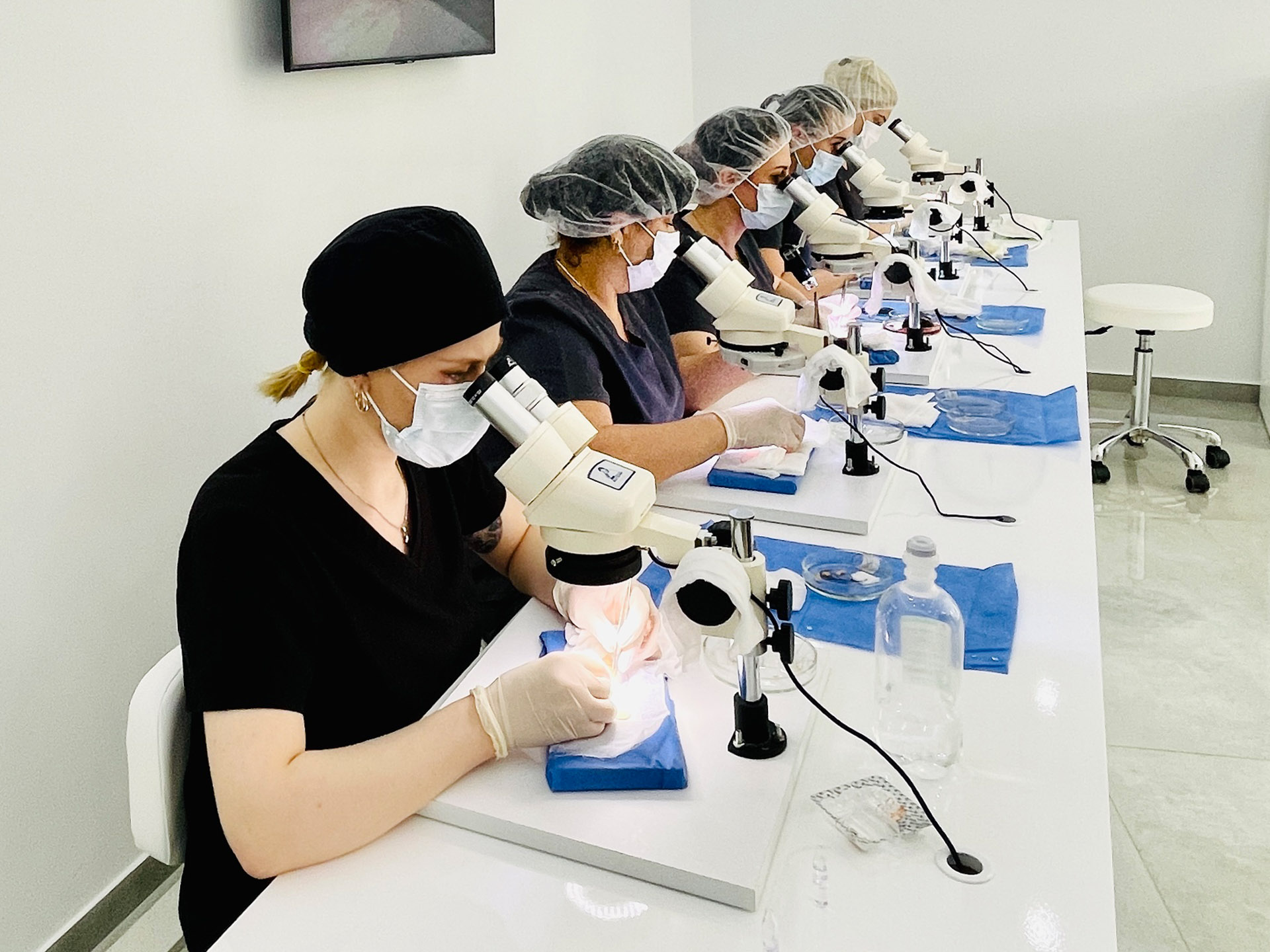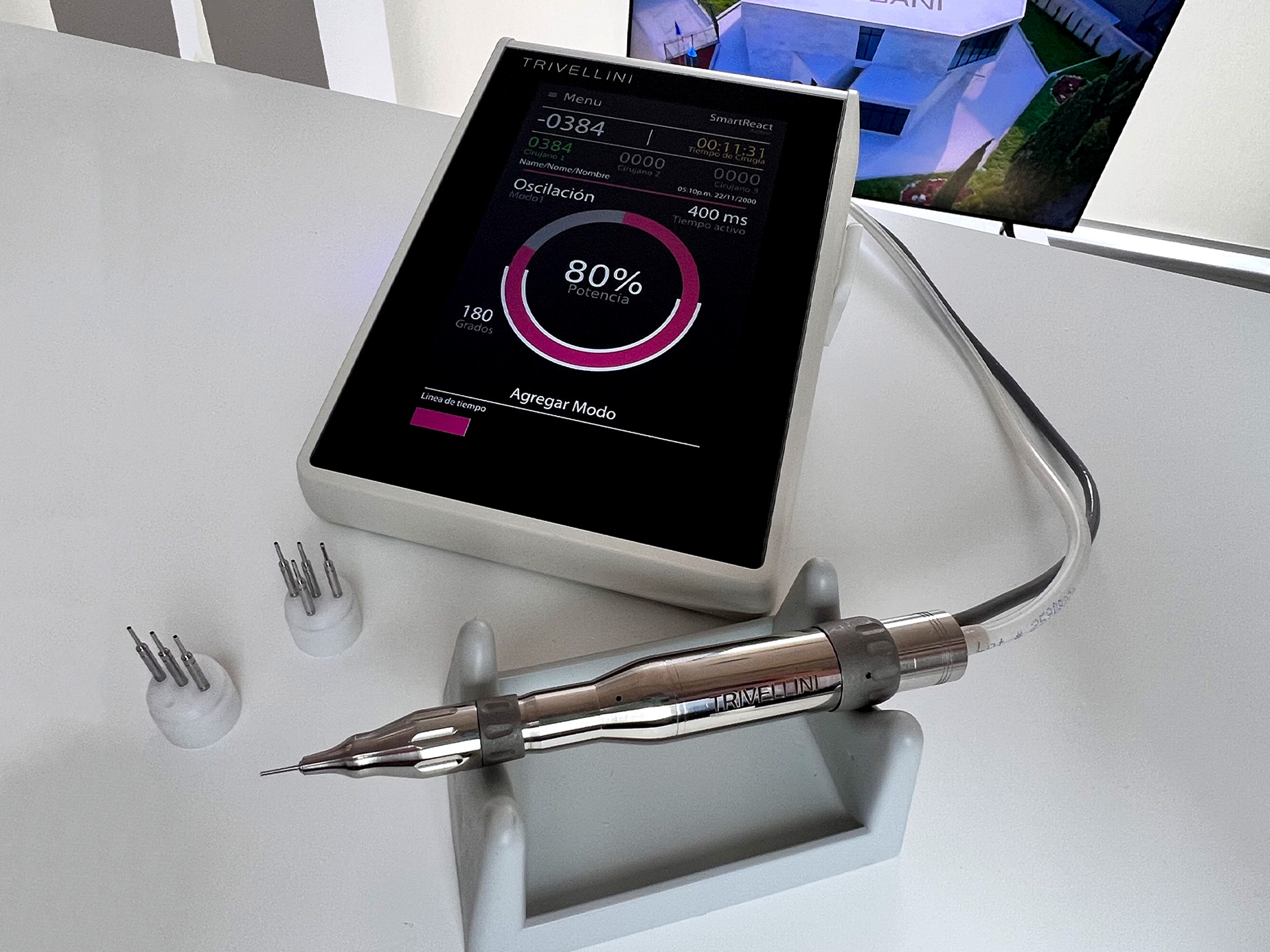
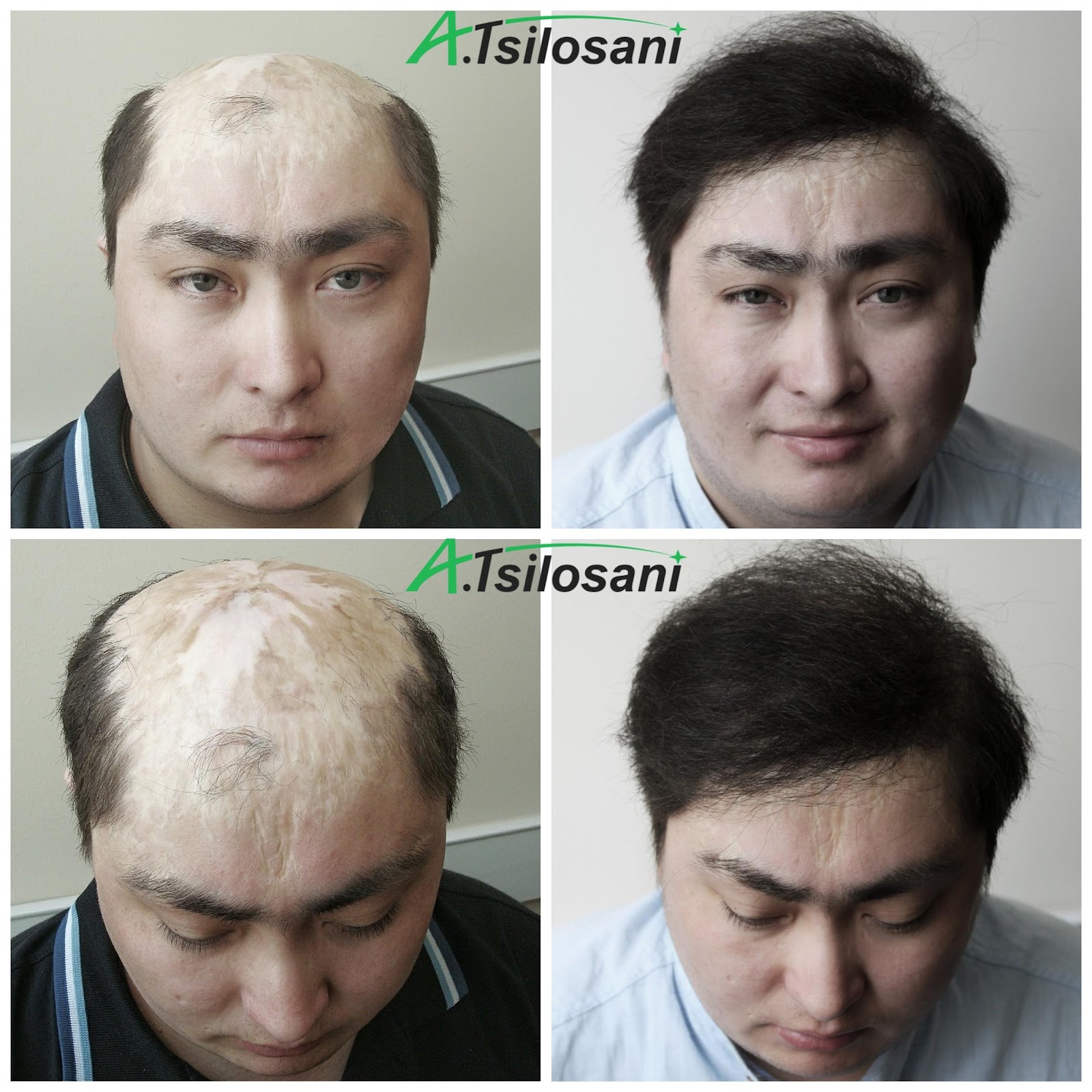
FUE Before and After
FUE transplant is a minimally invasive method of hair transplantation. The donor material is taken from the back of the head or other parts of the body (beard, chest, groin, legs, etc.) in the form of individual follicular units (grafts) using small (up to 1 mm in diameter) twisting punches.
During FUE hair transplant procedure, the surgeon makes circular, superficial (2-4 mm deep) incisions with the punch around each follicular unit after which the surgeon's assistant extracts them one by one using special forceps. Small wounds (up to 1 mm in diameter) left after the excision of follicular units are quickly healed leaving dot-like micro scars. Photos 1,2 and 3 demonstrate FUE before and after pictures of donor area immediately after FUE procedure, after 3 days and 1 year. The main advantage of FUE transplant is that, unlike the FUT transplant technique, it leaves no linear scar on the back of the head. Otherwise FUE hair transplant results are the same as after FUT transplant and you can check in our photo gallery a lot of FUE before and after photos.
Photo 1. The donor area immediately after harvesting 3,000 grafts with the FUE transplant method
2. Donor area on the third day after the FUE transplant
Photo 3. Donor area one year after the FUE transplant
The FUE transplant era began with the famous publication by American hair transplant surgeons William Rassman and Robert Bernstein: "FUE Procedure - Minimally Invasive Surgery for Hair Transplantation" in the journal "Dermatologic Surgery" in 2002. After this article, the whole world started performing FUE transplant procedures. However, the first FUE procedures far predate Rassman and Bernstein. Dr. Shoji Okuda and Dr. Hajime Tamura used exactly the same technique during World War II. But unfortunately, their invaluable experience was lost because of the war. In the 50s of the XX century the American dermatologist Norman Orentreich “rediscovered” hair transplant surgery. He didn’t know anything about experience and researches of the Japanese doctors. Dr. Orentreich started to conduct hair transplant procedures by using 4 mm punches. Consequently, after transplanting 4 mm diameter grafts such hair plugs started to grow very unnaturally with “Toothbrush” and “Doll Head” effects (see photo 4). At the end of 20th century Dr. Ray Woods began using small punches (up to 1 mm in diameter) for FUE transplant, but did not present or publish his work. Thus, Rassman and Bernstein are considered to be the pioneers of the FUE transplant method (see photos 5 and 6).
Photo 4. Hair plugs
Photo 5. A debate between William Rassman and Akaki Tsilosani at the experts round table at the ISHRS Meeting in Kuala Lumpur, 2014
Photo 6. Robert Bernstein and Akaki Tsilosani at the ISHRS Meeting in Montreal, 2008
FUE transplant is by far the most common and popular method of hair transplantation due to its obvious advantages.
- With the FUE transplant technique, there are no incisions or stitches in the donor area and therefore no linear scar remains. This allows the patient to wear a very short haircut if desired. Due to these reasons FUE hair transplantation is the method of choice in African patients as Africans have predisposition towards formation of keloid scars. Hair transplant before and after in black male patients should not leave any notable trace in the donor area as very often African patients choose short hair style. Dr. Akaki Tsilosani has a vast experience in working with African patients in Georgia as well as in Malaysia and Mauritius Island where he conducted sessions (see photos 7 and 8).
Photo 7.
Photo 8.
2. FUE transplant is much less invasive than FUT, thus the postoperative period is more comfortable for the patients and as mentioned before FUE recovery timeline is shorter.
3. With FUE transplant follicular units can be harvested not just from the back of the head, but also from other parts of the body (chest, beard, groin, legs, etc.). This becomes extremely valuable when there is a poor donor supply on the back of the head.
4. During the patient’s first hair transplant procedure, the FUE transplant technique allows the surgeon to selectively extract grafts with more hair (follicles) to achieve a better result (Photo 9).
Photo 9. 7-Hair FUE graft harvested with the punch designed by Dr. Tsilosani
However, the FUE transplant technique also has many disadvantages:
- Despite the lack of a linear scar on the back of the head, we cannot call FUE a completely “scarless” technique. After the FUE procedure, dot-like micro scars remain in the places where grafts were harvested. Since the hair won’t grow in these micro scars, the hair density on the back of the head naturally decreases, and with large-scale hair transplants (harvesting 5000 grafts and more), depletion of the donor area or scarring may occur (see photos 10 and 11). At the same time FUT transplant method allows us to transplant much bigger number of grafts avoiding donor area depletion. On the photo 12 you can see results of hair transplant before and after 5000 grafts (huge post burnt scar of the scalp). We should also note that small and medium scales of hair transplant with FUE transplant technique with high survival rate of grafts, if achieved, enable us to gain very good results by avoiding donor area depletion. On the photo 13 you can see FUE before and after 2000 grafts with very good result and with avoiding thinning of donor area.
Photo 10. Depletion of donor area after aggressive harvesting of 5000 grafts by the FUE transplant method in one of the Turkish clinics
Photo 11. Complete scarring of the donor area after poor-quality harvesting of 9000 grafts by the FUE transplant method in one of the Turkish clinics
Photo 12. Hair transplant before and after 5000 grafts with FUT method
Photo 13. FUE before and after 2000 grafts transplant
- Due to the intrinsic nature of FUE transplantation, even the most experienced surgeons using the most modern equipment (punches and machines) will have a higher follicular transection (cutting, damage) rate than during the FUT hair transplant procedure.
- Classic FUE transplant procedure requires complete or partial shaving of the hair (on the back of the head only). Although we often perform FUE transplantation without shaving any hair, especially in female patients. On the photo 14 you can see result of before and after hair transplant in female patient. FUE transplant without shaving is more labor-intensive, time-consuming, and expensive. If the FUE transplant is performed by an experienced surgeon, the FUE hair transplant cost is always higher than FUT.
Photo 14. Before and after hair transplant in female patient (2000 grafts)
Currently application of contemporary FUE transplant technique allows us to receive natural and very good results. You can see many examples of hairline transplant before and after in our photo gallery (see page Results).
In last ten years, there has been a significant and sharp increase in FUE transplantation procedures in the whole world. This, of course, was facilitated by hair transplant procedures of celebrities as for example Runi’s procedure in UK or Berlusconi’s procedure in Italy. The internet is full of celebrity hair transplant before and after photos.
Modern trends in hair transplants are such that hair transplant after 10 years will have a greater share of FUE transplants.
Since 2010, Dr. Akaki Tsilosani regularly conducts hair transplant training courses both in his institute and abroad. FUE transplant short training courses at our institute are quite sufficient for a doctor to conduct FUE procedures independently and have a successful business in this field after completing the course.


